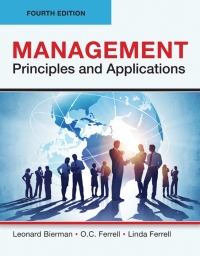Most firms do not want other companies to copy their successful business model. However, the shoe retailer
Question:
Most firms do not want other companies to copy their successful business model. However, the shoe retailer TOMS is not your typical retailer. Although many organizations try to incorporate cause-related marketing into their business operations, TOMS takes the concept of philanthropy one step further by blending a for-profit business with a philanthropic component in what it terms the One for One \({ }^{\oplus}\) model. For every product purchased, TOMS donates products or resources to help those in need. Under Mycoskie's inspirational leadership, the company's One for One concept has inspired other firms-such as eyeglass retailer Warby Parker-to adopt similar models as a way to give back to society. Rather than feel threatened, Mycoskie is funding social entrepreneurship firms with similar missions.
Unlike many nonprofits, TOMS's for-profit business enables the company to support its philanthropic component, which keeps the company from having to solicit donations. The idea for TOMS occurred after founder Blake Mycoskie witnessed the immense poverty in Argentinean villages, poverty so bad that many families could not afford to purchase shoes for their children. Recognizing the importance of shoes to health and education, Mycoskie decided to create a new for-profit business with a socially focused mission. For each pair of shoes TOMS sold, it would deliver a free pair of shoes to children in need across the world.
For his original product, Mycoskie decided to adopt the alpargata shoe worn in Argentina. The alpargata is a slip-on shoe made from canvas or fabric with rubber soles. After a Los Angeles Times article featured Mycoskie's new business, demand for the shoes exploded. Unfortunately for Mycoskie, he did not have enough shoes to fill the orders. He was able to work out the product shortage, and today TOMS is a thriving business.
Mycoskie demonstrates a number of traits that have made him an effective leader, including empathy, commitment, and passion. His skills in planning, organizing, staffing, and controlling TOMS's operations allowed him to turn his vision into a reality. Mycoskie also adopted a transformational leadership approach by inspiring employees to look beyond their self-interests to embrace the company mission of helping others. He has the ability to influence others and create leaders in the TOMS organization. His charisma attracted not only employees but customers as well. Mycoskie wanted customers to become active participants in the One for One movement by using their purchases to change the world. This inspirational business model provided TOMS with a competitive advantage, and the company was able to distribute its one-millionth pair of shoes in 2010.
After distributing its one-millionth pair of shoes, TOMS began to consider other products that could be used in the One for One model. "When I thought about launching another product with the TOMS model, vision seemed the most obvious choice," Mycoskie explained. Because 80 percent of vision impairment in developing countries is preventable or curable, TOMS decided that for every pair of eyewear it sold, the company would provide treatment or prescription glasses for those in need. TOMS chose Nepal as the first country in which to apply its One for One model......
Question
1. How has strong leadership at TOMS created a successful organization?
2. What are some ways that Blake Mycoskie created a shared vision for employees and customers?
3. Which of the five major leadership practices are present in Blake Mycoskie's leadership?
Step by Step Answer:

Management Principles And Applications
ISBN: 9781942041719
4th Edition
Authors: Leonard Bierman, O.C Ferrell , Linda Ferrell





